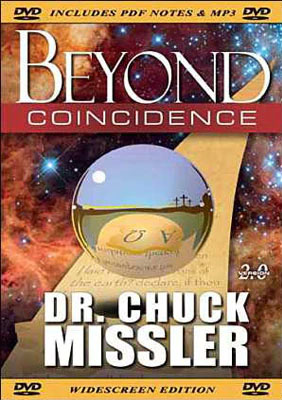Last month, we began a series on “the Boundaries of Our Reality” and explored some of the relevant discoveries of modern science and how they impact our Biblical perspectives. We discussed the Finite Universe, the Microcosm, the Nature of Time, and Hyperspaces.
The Anthropic Principle
Another observation—even by “secular” scientists—is that the more we understand the universe, the more it appears to be specifically designed for Man. There are literally hundreds of dimensions or ratios which, if varied even slightly, would make life impossible. If the earth was a little closer—or a little more distant—from the sun, it would be too hot or too cold to support life. If it rotated a little faster—or a little slower—life would be impossible. This applies to cosmological factors in our solar system, as well as key ratios in subatomic physics.
For instance, if the gravity of the earth at its surface were weaker, we would not have an adequate atmosphere; if it were stronger, our atmosphere would contain too much ammonia. If the electromagnetic coupling constant were either weaker or stronger, molecules for life would cease to exist.
As physicists examine the strong nuclear force coupling constant, it turns out that if it were only slightly weaker, multi-proton nuclei would not hold together and hydrogen would be the only element in the universe. The supply of various life-essential elements heavier than iron would be insufficient. If they were only slightly stronger, nuclear particles would tend to bond together more frequently and more firmly, and hydrogen would be rare in the universe. Either way, with less than a 1% change, life would be impossible.
If the weak nuclear force coupling constant were increased, there would be no helium or heavy elements; if it were decreased, there would be an overabundance of heavy elements. A further realization is that our position in the universe appears to have been tailored for the purpose of discovery: its position in the galaxy, the proportions of the moon and the sun to permit solar eclipses, the uniqueness of the visible spectrum, and dozens of other factors all imply teleology: a heuristic purpose in the overall design.
Beyond Coincidence: An Integrated Message
The great discovery is that the Bible has also been purposely designed. It can be proven to be a “message system”—not simply 66 books penned by 40 authors over thousands of years, the Bible is an integrated whole which bears evidence of supernatural engineering in every detail.
An Example
A remarkable example of this can be glimpsed in Genesis Chapter 5, where we have the genealogy of Adam through Noah. This is one of those chapters that we often tend to skim over quickly as we pass through Genesis—it’s simply a genealogy from Adam to Noah. But God always rewards the diligent student. Let’s examine this chapter more closely. In our Bible, we read the Hebrew names. What do these names mean in English?
A Study of Original Roots
The meaning of proper names can be a difficult pursuit since a direct translation is often not readily available. Even a conventional Hebrew lexicon can prove disappointing. A study of the original roots, however, can yield some fascinating insights.1 (A caveat: many study aids, such as a conventional lexicon, can prove rather superficial when dealing with proper nouns. Furthermore, views concerning the meanings of original roots are not free of controversy and variant readings.) Let’s take an example.
The Flood Judgment
Methuselah comes from מות, muth, a root that means “death,” and from שָׁלַח, shalach, which means “to bring,” or “to send forth.” The name Methuselah means, “his death shall bring.” Methuselah’s father was given a prophecy of the coming Great Flood, and was apparently told that as long as his son was alive, the judgment of the flood would be withheld; but as soon as he died, the flood would be brought or sent forth. (Can you imagine raising a kid like that? Every time the boy caught a cold, the entire neighborhood must have panicked!)
And, indeed, the year that Methuselah died,2 the flood came. It is interesting that Methuselah’s life, in effect, was a symbol of God’s mercy in forestalling the coming judgment of the flood. It is therefore fitting that his lifetime is the oldest in the Bible, speaking of the extensiveness of God’s mercy.
The Other Names
If there is such significance in Methuselah’s name, let’s examine the other names to see what may lie behind them. Adam’s name, אדם, means “man.” As the first man, that seems straightforward enough.
Seth: Adam’s son was named Seth, שֵׁת, which means “appointed.” Eve said, “For God hath appointed me another seed instead of Abel, whom Cain slew.”
Enosh: Seth’s son was called Enosh, אנוש, which means “mortal,” “frail,” or “miserable.” It is from the root anash, to be incurable, used of a wound, grief, woe, sickness, or wickedness.
Kenan: Enosh’s son was named Kenan, from קינן, which can mean “sorrow,” “dirge,” or “elegy.” (The precise denotation is somewhat elusive; some study aids unfortunately presume that Kenan is synonymous with “Cainan.”)
Mahalalel: Kenan’s son was Mahalalel, from מהלל, which means “blessed” or “praise”; and El, the name for God. Thus, Mahalalel means “the Blessed God.” Often Hebrew names include El, the name of God, as Daniel, “God is my Judge,” etc.
Jared: Mahalalel’s son was named Jared, יָרֶד, from the verb yaradh, meaning “shall come down.”
Enoch: Jared’s son was named Enoch, חֲנוך, which means “teaching,” or “commencement.” He was the first of four generations of preachers. In fact, the earliest recorded prophecy was by Enoch, which amazingly enough deals with the Second Coming of Christ (Jude 14, 15).
Methuselah: Enoch was the father of Methuselah, whose name we have already mentioned means “his death shall bring.”
Lamech: Methuselah’s son was named Lamech, לֶמֶךְ, a root still evident today in our own English word, “lament” or “lamentation.” Lamech suggests “despairing.” (This name is also linked to the Lamech in Cain’s line who inadvertently killed his son Tubal-Cain in a hunting incident.)
Noah: Lamech, of course, is the father of Noah, נֹחַ, which is derived from nacham, “to bring relief” or “comfort,” as Lamech himself explains in Genesis 5:29. Now let’s put it all together:
| Hebrew | English |
|---|---|
| Adam | Man |
| Seth | Appointed |
| Enosh | Mortal |
| Kenan | Sorrow; |
| Mahalalel | The Blessed God |
| Jared | Shall come down |
| Enoch | Teaching |
| Methuselah | His death shall bring |
| Lamech | The Despairing |
| Noah | Rest, or comfort. |
That’s rather remarkable: “Man (is) appointed mortal sorrow; (but) the Blessed God shall come down teaching (that) His death shall bring (the) despairing rest.”
Here’s the “Gospel” hidden within a genealogy in Genesis! The implications of this discovery are more widespread than is evident at first glance. It demonstrates that in the earliest chapters of the Book of Genesis, God had already laid out His plan of redemption for the predicament of mankind. It is a love story, written in blood on a wooden cross, which was erected in Judea almost 2,000 years ago!
Notes:
- Jones, Alfred, Dictionary of Old Testament Proper Names, Kregel Publications, Grand Rapids MI, 1990; Pink, Arthur W., Gleanings in Genesis, Moody Bible Institute, Chicago IL, 1922; Stedman, Ray C., The Beginnings, Word Books, Waco TX, 1978.
- Methuselah was 187 when he had Lamech, and lived 782 years more. Lamech had Noah when he was 182 (Gen 5:25-28). The Flood came in Noah’s 600th year (Gen 7:6, 11). 600 + 182 = 782nd year of Lamech, the year Methuselah died.







